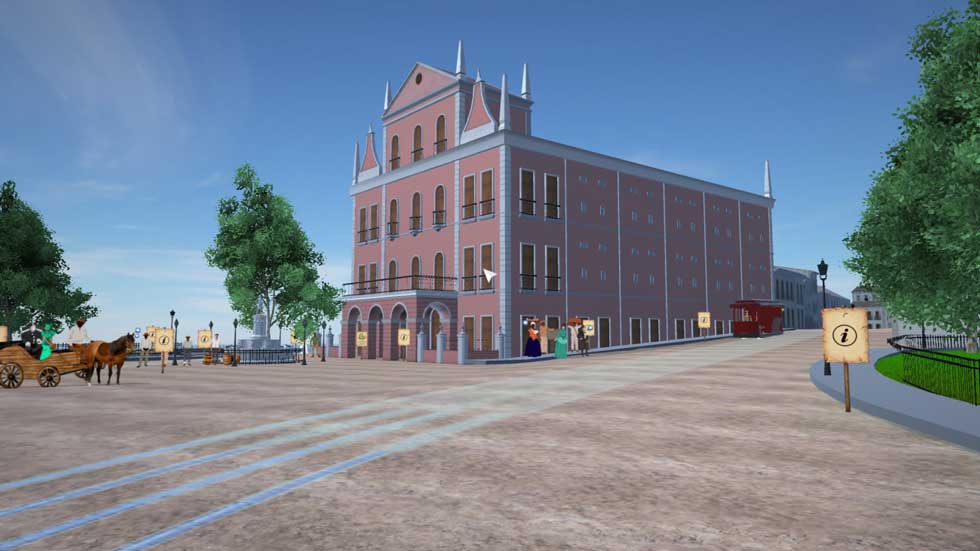Approach strolling through Salvador in the 19th century, chatting with the public and getting to know the political and artistic icons of the time became possible for everyone who has access to a computer with an internet connection.
All these experiences are offered by the São João da Bahia Virtual Museum, a project of the PhD student of the Post-Graduation Program in Education and Contemporaneity (PPGEduC) of the State University of Bahia, UNEB, Maria Antonia Lima Gomes. The project, which is the result of the researcher’s thesis in development, consists of a three-dimensional (3D) modeling and imaging program that recreates beyond the theater, the region where today Castro Alves Square (formerly Sé district) , In the historical center of the capital.
To access the software, simply go to the virtual museum website and check the specifications and requirements of the system. Download the executable file, according to the operating system used by the user. After starting the virtual museum program, the user only needs to move the mouse cursor and use the keyboard arrows to explore the entire available region and promote interactions with the characters. It is possible to dialogue with people on the streets and historical icons such as the Emperor Dom Pedro II, the poet Castro Alves, the musician Carlos Gomes and the actor and singer Xisto Bahia. The subject / user can still enter the São João da Bahia Theater and see how the masked balls of the time happened.
The old cultural space began to be built in 1806 and was inaugurated in 1812. The Soteropolitan space was the first large Brazilian theater, with capacity for about 2 thousand people. Idealizer of the research / project, Maria Antonia Lima Gomes points out that the São João da Bahia Virtual Theater Museum was created without profit. After the defense of the doctoral thesis that culminated in its production, the program will become public domain.
The software is in the process of updating and already has more than 1,800 accesses in Brazil and numerous accesses outside the country. All users can leave suggestions and collaborations, so the program will undergo adjustments to qualify the proposal to offer a socioconstructivist approach to 3D modeling.
The best part of the software is that, this way, students, when interacting with this 3D environment, can learn and understand the contexts of History, Geography, Portuguese Language, Mathematics, Music, Arts, Architecture and other teaching and learning processes that will depend on the creativity of Each student interacting with the 3D Virtual Museum of the São João da Bahia Theater and the city of Salvador during the 19th century. For example, a student studying abot the museum can easily use the software to explore the place and learn in a virtual environment and not just rely on the theoritcal resources that are there. This virtual feature of the museum makes this software a big thing for students to learn and pick all the information of this ancient museum in a very innovative way and also helps the students to get imaginative and creative while learning.
To access and interact through the Virtual Museum click on the link: www.teatrosaojoaodabahia.net.br .
This academic work is guided by State University of Bahia ( UNEB), Phd. Alfredo Matta and co-orientation of the Phd. Lucas Robatto, Federal University of Bahia (Ufba).
Some images from the virtual tour of the museum are shown below. Get a feel of the tool:
Image 1. (Outside) Theater Square
Image 2: Outside (View Bay of All Saints)
Image 3: Theater Interior
Image 4: Theater Interior
Give this software a try and share your experiences with us in the comment section below.
